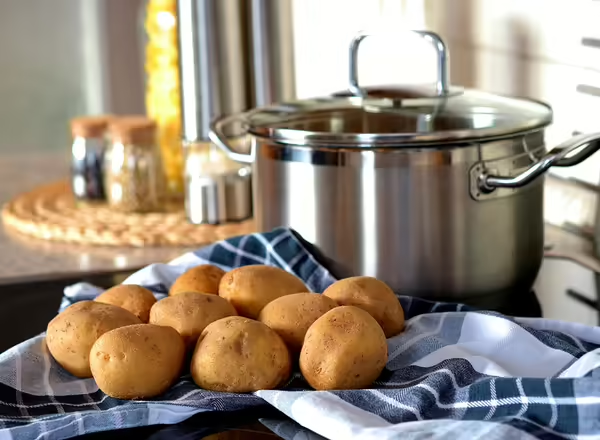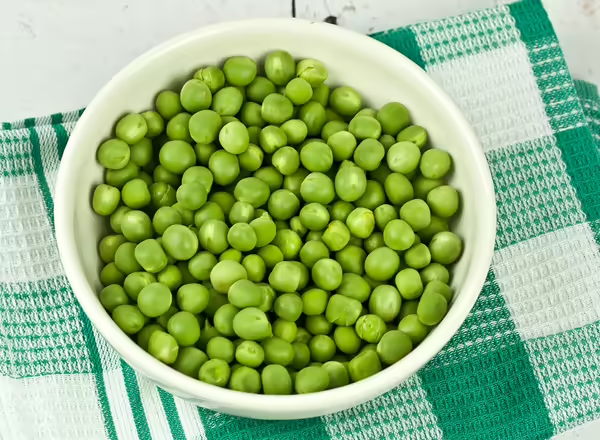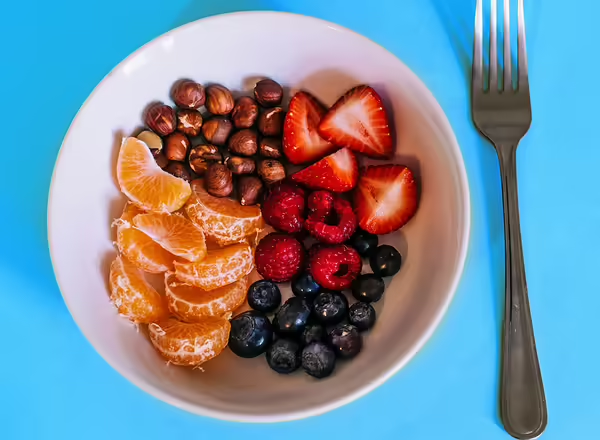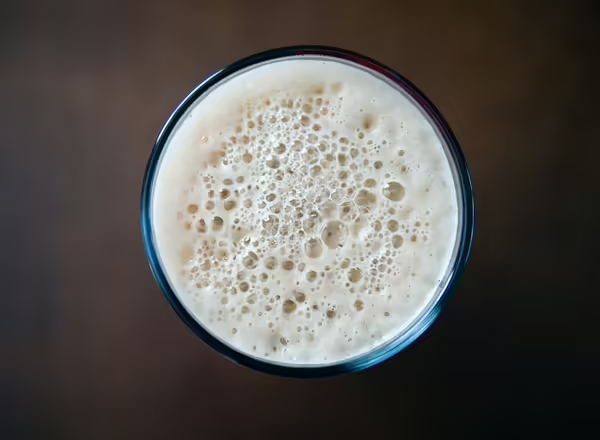
Carbohydrates and Diabetes
What Foods Have Carbohydrates?
The foods that have carbohydrates are in the starches group, the milk group, and the fruit group. Vegetables have some carbohydrate as well, but not enough to count as a whole “carb unit” or 15 grams of carbohydrate per serving.
Starch and Starchy Vegetable Group
One serving from the starch and starchy vegetables group contains about 80 calories, 15 grams of carbohydrate, 3 grams of protein, and 0 to 1 gram of fat.
Examples of one serving from this group would include:
- One slice of bread
- Half of a bun or small bagel
- 1/4 of a baked potato
- 1/3 cup pasta (cooked)
- 1/3 cup rice (cooked)

Starchy vegetables are healthy, but they are higher in carbohydrates than other vegetables and they have more calories. Therefore, these vegetables are grouped with other starchy foods instead of vegetables. One serving of any starchy vegetable is about 1/2 cup cooked vegetables. Starchy vegetables include:
- Corn
- Dried beans
- Lima beans
- Peas
- Potatoes
- Sweet potatoes
- Winter squash

Remember, one serving from this group contains 15 grams of carbohydrate. If you are unsure of how many starch servings a food contains, check the Nutrition Facts label. Look at the total carbohydrates and divide by 15 to find out how many starch servings the product contains. For instance, if the Nutrition Facts label for a package of English muffins says that one English muffin contains 30 grams of carbohydrate, then this would count as two servings from the Starch Group.
- Choose starches made with little fat as often as you can. For example, choose a slice of toast instead of a doughnut.
- Choose foods made from whole grains to get more fiber. Whole-grain foods include whole-wheat bread, whole-grain pasta, and whole bran cereal. (Three grams of fiber per serving would be a good fiber choice.)
- Starchy vegetables made with fat count as one serving from the starch group and one serving from the fat group. These foods would include French fries and yams with butter.
- Always check the Nutrition Facts labels of foods the first time you buy them so you will know how many servings from the Starch Group the products contain.
- Foods in the Fruit group include fresh, frozen, canned and dried fruit as well as fruit juices. All fruits are grouped together because all of their calories come from carbohydrates. Fruits contain very little protein and no fat.
- Although foods with carbohydrates raise blood glucose, people with diabetes do not need to avoid fruits or fruit juice. In fact, it is important that everyone eat at least two servings of fruit every day. However, as with other foods, fruits need to be part of the meal plan.

One serving from the Fruit Group contains about 60 calories and 15 grams of carbohydrate.
Examples of one serving from this group would include:
- One small piece of fresh fruit (like an apple or orange that is the size of a tennis ball)
- 1/2 cup of canned or fresh fruit (like fresh pears or peaches canned in water)
- 1/2 cup of unsweetened fruit juice (like unsweetened orange juice)
- 1/3 cup of some fruit juice that is naturally higher in carbohydrates (like prune juice or cranberry juice)
- 1/4 cup dried fruit (like raisins)
- Choose fresh fruits more often than canned fruits or fruit juices. Unlike whole fruits, canned fruits and fruit juices are often higher in sugar and calories, and fruit juices usually do not have any fiber.
- When choosing canned fruit, choose fruit canned in its own juice, not a syrup-packed variety. If choosing a generic product that is not labeled as “packed in its own juice” look at the Nutrition Facts label. Talk to your dietitian or health care provider if you have any questions about choosing appropriate canned fruit.
- Dried fruit, when compared to the same amount of fresh or frozen fruit, will always be the higher in calories.
- Read the Nutrition Facts label if you are unsure of how many fruit servings a certain amount of food contains. For fresh fruit that does not have a Nutrition Facts label, follow the above guidelines under the section titled “one serving from the fruit group.”

While milk and yogurt usually contain similar amounts of protein and carbohydrates, they can vary in their fat content. One serving from the Milk and Yogurt Group usually contains about 12 grams of carbohydrate and 8 grams of protein, but the amount of fat and calories in these foods varies. For instance, one cup of fat-free milk contains about 90 calories and 0 grams of fat, but one cup of whole milk contains about 150 calories and 8 grams of fat. Check the Nutrition Facts labels of these products to identify the amount of calories and fat that they contain.
Examples of one serving from this group would include:
- 1 cup milk ( fat-free, ½%, 1%, 2% or whole)
- 1 cup soy milk (low fat, or fat-free)
- 2/3 fat-free yogurt (flavored or plain)
- 3/4 cup low-fat yogurt
- Choose fat-free, low-fat, or reduced-fat products from this group whenever possible. These products contain less fat and fewer calories.
- Read the Nutrition Facts labels of yogurts carefully. Yogurt cups often vary in size so it is important to check the serving size of yogurts. Also, the calorie content of yogurt varies quite a bit, because some companies add sugar, syrup, artificial sweeteners, and/or fruit.
- Read the Nutrition Facts label if you are unsure of how many milk or yogurt servings a certain amount of food contains
Carb counting is a way for those with type 1 or type 2 diabetes to better control their blood sugar levels. Carbohydrates or “carbs” for short, are one of the main nutrients along with fats, and proteins that our body needs for energy. Carb counting is keeping track of how many carbs we consume in a specific amount of time.
Why is Carb Counting Important?
In the body carbohydrates are further broken down to glucose, or sugar. Because carbs break down into sugar, carbs affect blood sugar levels. Keeping track of carbs eaten in a certain time frame can help manage blood sugar levels.
How to Count Carbs
Carbs are in most foods so it important to check nutrition labels. Nutrition labels will show the amount of carbs in grams in food.
Example
- 1 cup of cooked pasta contains about 45 grams of carbs, or 3 carb units.
- 10 crackers have 22 grams of carbs, or 1.5 carb units.
When looking at a nutrition label, it is important to read the serving size for each food.
- The serving size is listed at the top of the nutrition label.
- To accurately count carbs, it is important to have the suggested serving size.
- To count carbs using carb units, divide by the amount of carbohydrates listed on the nutrition label by the number 15. 1 carb unit is 15 grams carb.
- For example, the pasta listed above is 3 carb units because 45 divided by 15 is 3.
Foods like produce do not have nutrition labels. For example, fruits and vegetables do not come in packages. To learn the amount of carbs for these foods, research and reading will help. Here is a quick guide:
|
Produce
|
Serving/Amount
|
Carbs
|
Carb Unit
|
|
Apple
|
1 medium
|
15 grams
|
1
|
|
Potato
|
1 medium
|
30 grams
|
2
|
|
Baby Carrots
|
10 carrots
|
8 grams
|
½
|
|
Banana
|
1 medium
|
27 grams
|
2
|
|
Red Tomato
|
1 medium (whole)
|
4.8 grams
|
<½
|
How Many Carbs Does a Person with Diabetes Need?
The Dietary Guidelines for Americans recommends that carbs make up 45-65% of daily calorie needs, but the amount of carbs a person needs depends on many factors. These factors include height, weight, physical activity and age. For persons with diabetes who take insulin, the amount of carbs also depends on insulin doses. Usually carbs consumed at each meal and snack time are consistent from day to day. To get more information on specific carbohydrate needs contact a certified diabetes educator or a Registered Dietitian to find a carb counting plan that works for you.
- NIH NIDDK. Diabetes Diet, Eating & Physical Activity NIH2016
- ADA. Get Smart on Carb Counting.